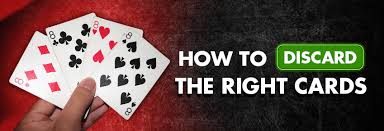Discard Rummy, Game also known simply as Rummy or Standard Rummy, is a beloved card game that has entertained players for generations. With its straightforward rules and strategic depth, Discard Rummy is a staple in the repertoire of card game enthusiasts. This article explores the origins, rules, strategies, and variations of Discard Rummy, providing a comprehensive guide to this timeless game.
Origins and History
Rummy is part of a large family of card games that involve matching cards of the same rank or sequence and suit. The origins of Rummy are somewhat unclear, but it is believed to have originated in the early 20th century, possibly evolving from older games like Conquian, a Mexican game. Rummy has since branched into numerous variations, each with its unique rules and nuances.
Basic Rules of Discard Rummy
Discard Rummy is typically played with a standard 52-card deck. The game can accommodate 2 to 6 players, making it a versatile choice for various social settings. The primary objective is to form sets and runs to be the first to go out by discarding all your cards.
Setup:
- Deal: Each player is dealt a specific number of cards, usually 10. The remaining cards form the stockpile, and the top card is placed face-up to start the discard pile.
- Card Values: Numbered cards are worth their face value, face cards (Kings, Queens, and Jacks) are worth 10 points, and Aces can be worth 1 or 11 points depending on the rules.
Gameplay:
- Turns: Players take turns drawing a card from either the stockpile or the discard pile and then discarding a card.
- Melding: On a player’s turn, they can lay down sets (three or four cards of the same rank) or runs (three or more consecutive cards of the same suit).
- Laying Off: Players can add cards to existing melds on the table, either their own or those of their opponents.
- Going Out: The round ends when a player discards their last card. The player must have a valid meld to go out.
Scoring:
- Players score points based on the value of the cards remaining in their hands.
- The player who goes out scores 0 points for that round.
- The player with the lowest total score at the end of the game wins.
Strategies for Success
While luck plays a role in Discard Rummy, strategic play is crucial for consistent success. Here are some tips to enhance your gameplay:
- Plan Your Melds: Focus on creating both sets and runs to keep your options open. This flexibility can help you adapt to the changing game dynamics.
- Observe Opponents: Keep track of the cards your opponents pick and discard. This can provide valuable insights into their strategies and potential melds.
- Manage High-Value Cards: Holding onto high-value cards like face cards and aces can be risky, as they can significantly increase your score if not melded. Try to meld or discard them early.
- Use the Discard Pile Wisely: Drawing from the discard pile can help complete your melds but also reveals your strategy to opponents. Use it judiciously.
Variations of Discard Rummy
Discard Rummy has numerous variations, each with its own set of rules and twists. Some popular variations include:
- Gin Rummy: A faster-paced version where players aim to form melds and knock (declare) when their deadwood (unmatched cards) totals 10 points or less.
- Oklahoma Rummy: Similar to Gin Rummy but with a joker added to the deck and a unique scoring system.
- 500 Rummy: Players score points by forming melds and the game continues until a player reaches 500 points.
Conclusion
Discard Rummy is a classic card game that combines simplicity with strategic depth, making it accessible to players of all ages and skill levels. Its rich history and numerous variations ensure that there is always a new twist to explore, keeping the game fresh and exciting. Whether you’re a seasoned card player or new to the world of Rummy, Discard Rummy offers a delightful and engaging experience that stands the test of time. So gather your friends, deal the cards, and immerse yourself in the strategic fun of Discard Rummy.




